Imagine you are trying to shout to a friend across a big field. If you yell in all directions, your voice spreads out, and by the time it reaches them, it might be too weak to hear. But what if you could focus your voice into a narrow beam aimed straight at your friend, like a flashlight? That’s basically what beamforming does in wireless communication—it focuses a signal in one direction instead of letting it spread out everywhere.
Think of using a bunch of flashlights all pointed at the same spot to make that spot really bright, rather than lighting up a whole area dimly.
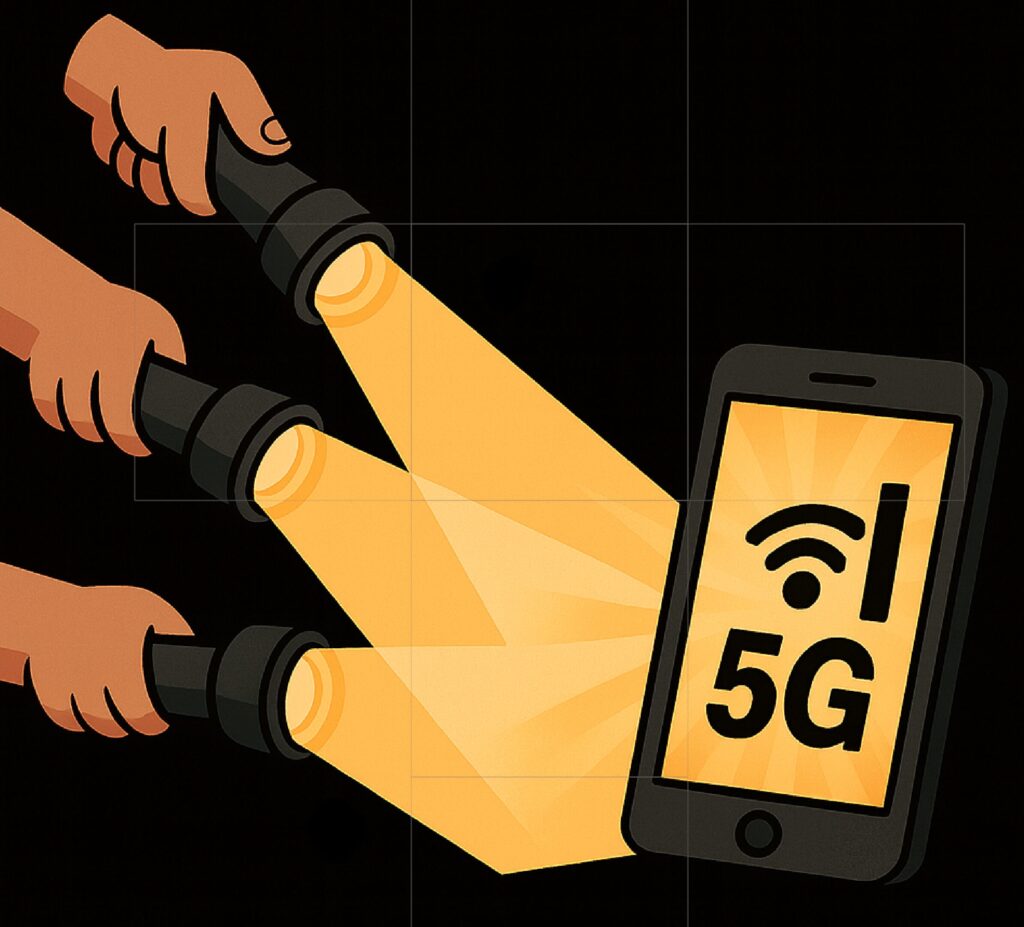
In practical terms, beamforming allows a Wi-Fi router or a 5G cell tower to direct its energy towards a specific receiver (like your phone or laptop). This boosts the signal strength and range without needing any extra power overall—it’s just focusing the energy where you want it.
Watch the full video lecture below to see these concepts in action:
From Ripples to Radio Waves
To understand how beamforming works, let’s start with something simple: ripples on water. If you’ve ever tossed two pebbles into a pond at the same time, you’ve seen how the ripples interact. Each pebble creates expanding circular waves, and when the two sets of ripples overlap, they combine as they pass through each other. Sometimes the peaks of two ripples line up together and add up, making a taller wave. Other times, a peak meets a valley (a low point of another ripple), and they cancel out, so the water at that spot stays pretty calm. In some places, the waves get bigger, and in others, they nearly disappear. This behavior of waves adding together or cancelling out is called interference, and it’s the key to how beamforming works.
Two stones dropped in water creating ripples that interfere.
Constructive & Destructive Interference
Let’s break down those two outcomes when waves meet, because they’re super important for understanding beamforming:
- Constructive interference (adding up): This is when two waves meet in sync — their peaks arrive at the same time. They add together and make a bigger wave. In wireless terms, constructive interference means a stronger signal. Beamforming uses this principle to amplify the signal towards the intended receiver.
- Destructive interference (cancelling out): This is the opposite. It happens when the peak of one wave meets the valley of another wave. They cancel each other out, resulting in a much smaller wave or even no wave at all (think silence). (This is exactly how noise-cancelling headphones work — they play a “mirror” of the unwanted noise to cancel it out.) In beamforming, we use destructive interference to quiet the signal in directions we don’t want it to go.
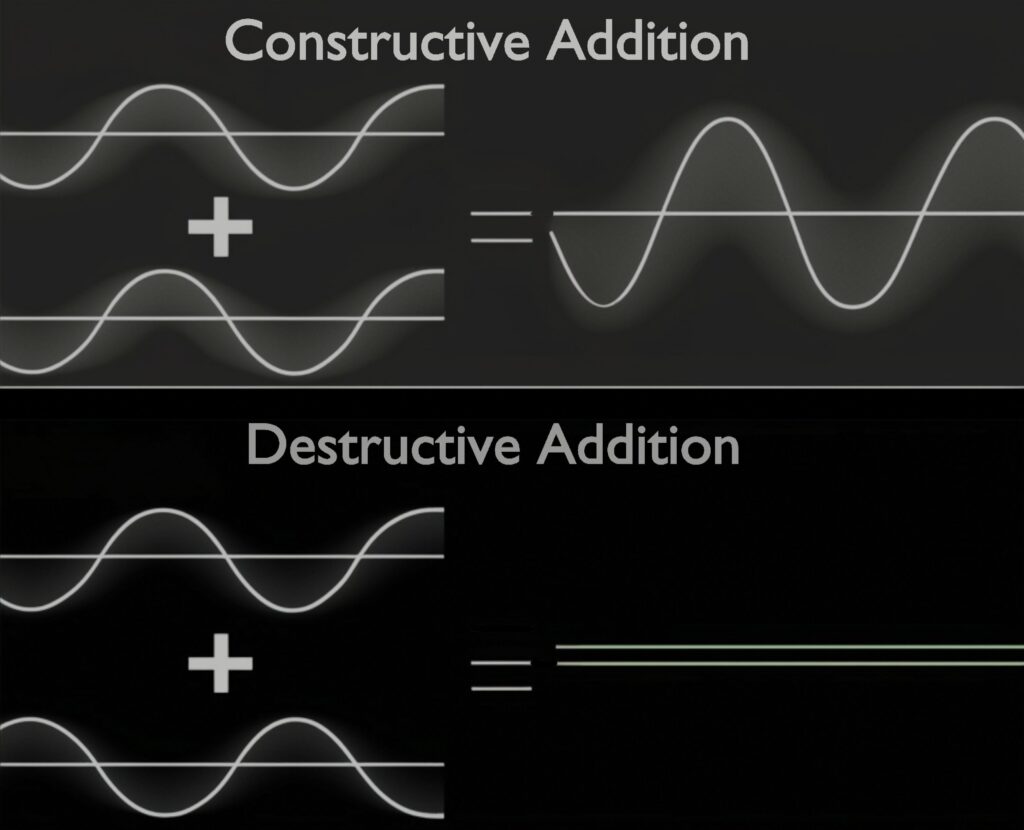
In short, beamforming is about using constructive interference to boost the signal where you want it, and destructive interference to reduce it where you don’t. But how do we actually do that aiming in practice?
How to Change the Direction of Beams?
Okay, so how do we aim a wireless signal exactly where we want it to go? I mean, you can’t just grab a radio wave and point it like a laser pointer… or can you? It turns out there’s a clever way to steer a signal: by adjusting the timing of the signals from multiple antennas. (This timing trick is technically called adjusting the phase of each signal, but it’s easier to think of it as adding tiny time delays.)
Picture the pond again, but now drop two pebbles, one just after the other, instead of at the same time. The ripples from the second pebble start a moment later than the ripples from the first. At a certain angle, the peaks of the later ripples will catch up and line up with the peaks of the earlier ones. In that direction, the waves combine nicely into a bigger ripple (constructive interference at work again!). If you change the time delay between the two drops, you change the angle where those waves line up and reinforce each other.
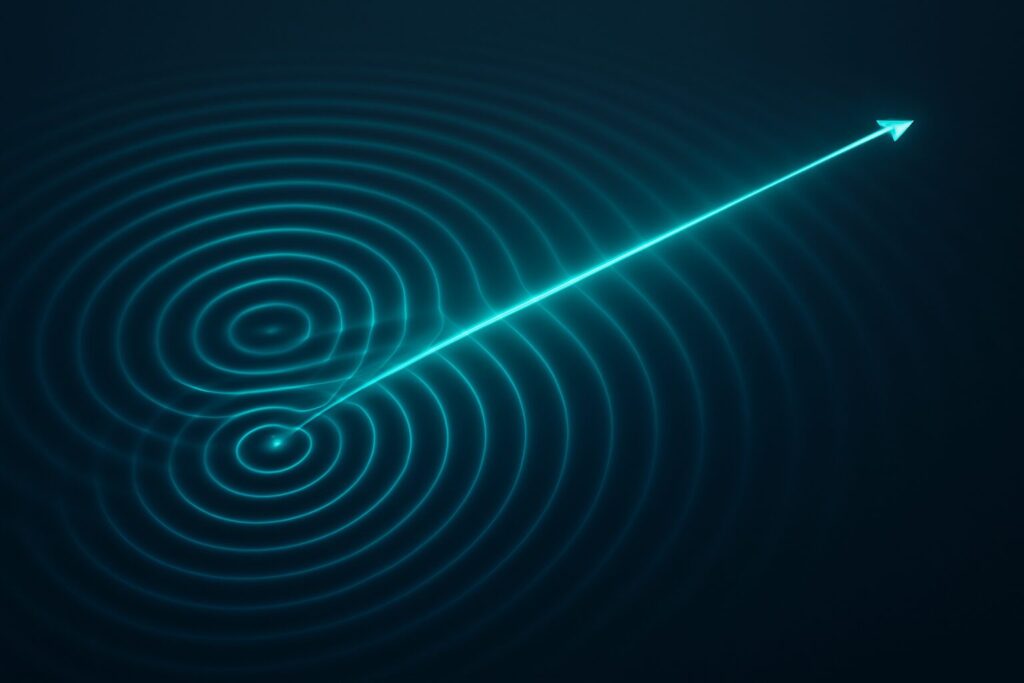
By cleverly timing waves, we can steer energy in a particular direction.
Antennas do the same trick with radio waves. They don’t have to physically turn to point at your device. Instead, multiple antennas send the same signal with slight timing differences.
The figure on the right illustrates this. If the leftmost antenna starts its signal a nanosecond before the one on the right, the combined wave they generate will be strongest at some angle towards the right.
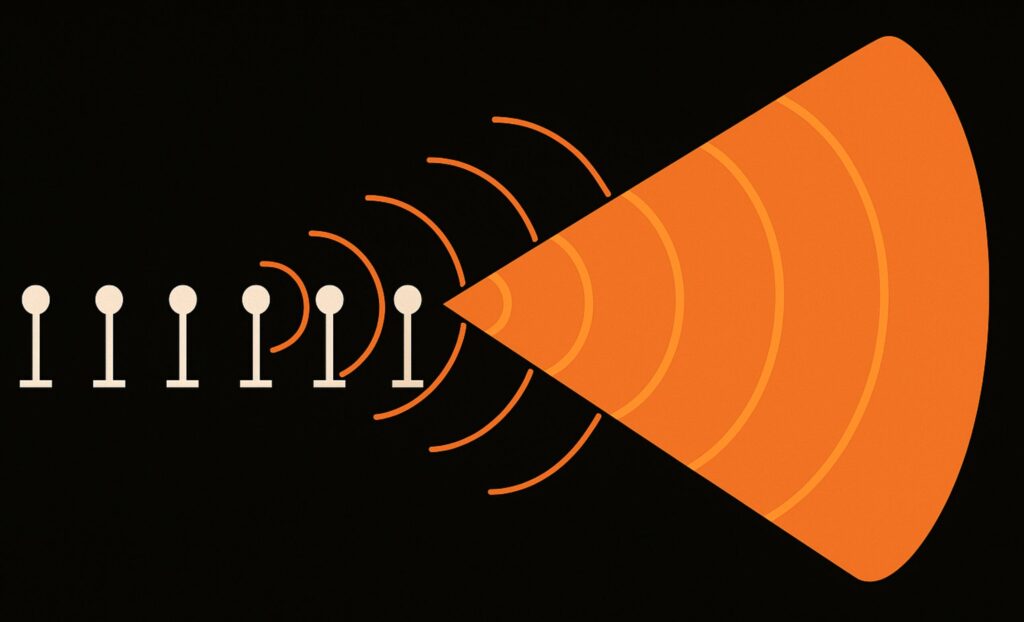
This is precisely how beamforming antennas steer a beam. The transmitter is just tweaking the timing of transmissions at each antenna so that the radio waves meet in phase (constructively) in the desired direction. This technique is also known as spatial filtering.
Delay is the steering wheel. Adjusting the delay at each antenna steers the beam.
Power Allocation for a Stronger Beam
Timing isn’t the only thing we can play with. Another trick in beamforming is that you don’t have to give every antenna the same amount of power. You can feed a little more power to the antennas that are closer to the receiver, and a little less to the ones that aren’t. By doing this, the combined signal becomes even stronger in the direction you want and weaker in other directions. You’re not using more total power—you’re just using the same power more wisely by distributing it unevenly.
In a nutshell, beamforming comes down to timing and power. By sending signals from each antenna at just the right time and with just the right power, all those signals will add up together in the direction you want.
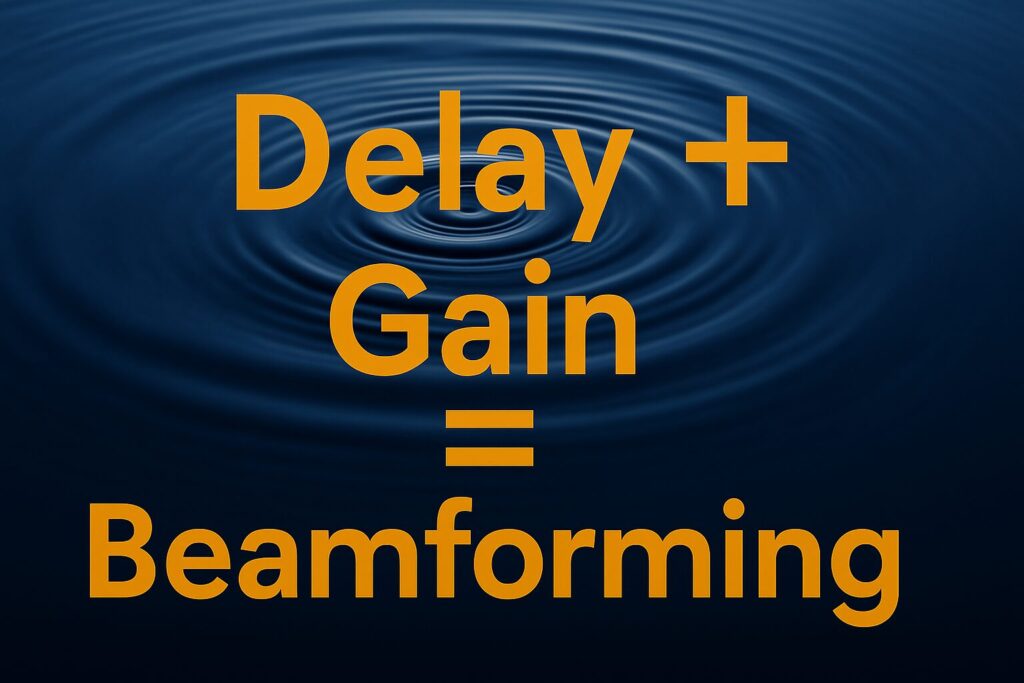
Why Beamforming Matters?
Beamforming is everywhere in modern wireless. Your newer Wi-Fi router uses it to aim a stronger signal at your laptop or phone. 4G and 5G cell towers constantly steer a beam towards your phone as you move around, so the connection feels fast and steady.
Beamforming also helps cut down on wireless clutter. Because signals are directed towards where they’re needed, your neighbour’s focused Wi-Fi signal is less likely to interfere with your Wi-Fi, and vice versa. The same idea powers radar systems and satellite communications also. They use beamforming to aim signals precisely at a target (like an airplane or a satellite receiver). Sometimes they even deliberately quiet the signal in certain directions (using destructive interference) to avoid interfering with other equipment or signals.

Leave a Reply